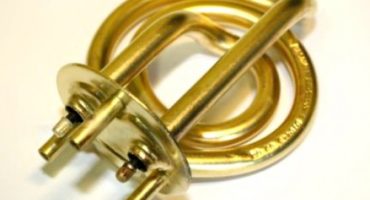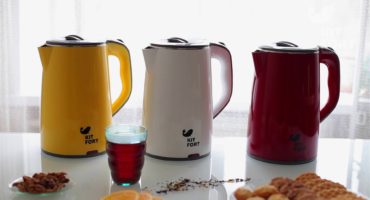Scale and rust in the kettle is a phenomenon that absolutely everyone who uses this kitchen creature encounters. They appear due to the high content of salts and minerals in tap water. Even if you use purchased water from this problem does not get rid. Therefore, it is not surprising that many are interested in how to clean the kettle from stainless steel from scale.
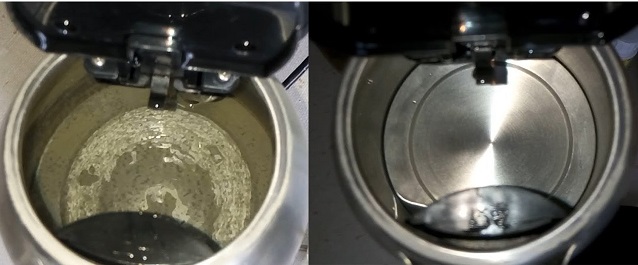
Scale in the kettle
What is scale and how is it harmful?
The precipitate formed during boiling may have a different composition. It depends on the water that is used. The composition may include organic and inorganic impurities, sulfates, silicates, carbonates. Limescale is a set of chemical compounds that negatively affect both technology and the body:
- Negative impact on equipment. The slew rate of the layer is completely dependent on the fluid used, surface quality and heating element. Immediately after purchasing new equipment, the deposition rate is low, but after several rough cleanings of the surface with aggressive agents, it increases significantly. Formations adversely affect the boiling rate, more energy is spent. Also, scale can lead to overheating and combustion of equipment.
- Harmful to health. The resulting layer contains many different elements. Despite the fact that they are necessary for our body, use them in the required amount. Drinking water from a teapot with a large layer of scale leads to a glut of certain elements. This is fraught with clogging of blood vessels, the deposition of kidney stones. In addition, porous surfaces are an ideal medium for the reproduction of various harmful bacteria.
All this indicates that it is necessary to carefully and regularly clean surfaces from deposits. However, it must be correct and not harm the heating elements and surfaces.

Cleaning products
Descaler

Descaler
In the modern market, many different tools are offered that effectively combat this problem. However, their price is not always justified. Therefore, many housewives are looking for an alternative to such funds. Among the most popular, it is necessary to distinguish several:
- lemon acid;
- vinegar
- brine;
- potato peelings;
- soda;
- Pepsi or Coca-Cola.
Well, just not all of these folk remedies are effective and able to quickly cope with scale. Consider how effective clean the kettle stainless steel folk remedies that can be found in every housewife in the house.
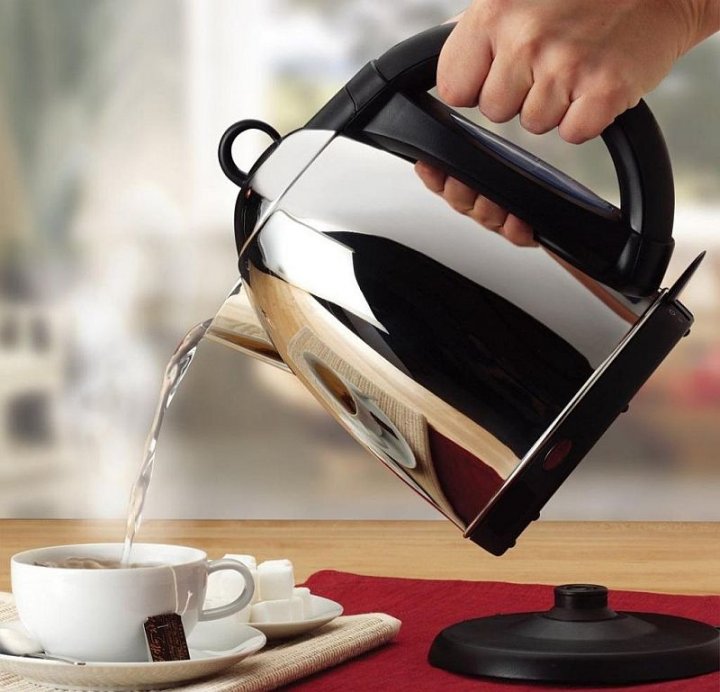
How to cleanse effectively
Anti-scale citric acid
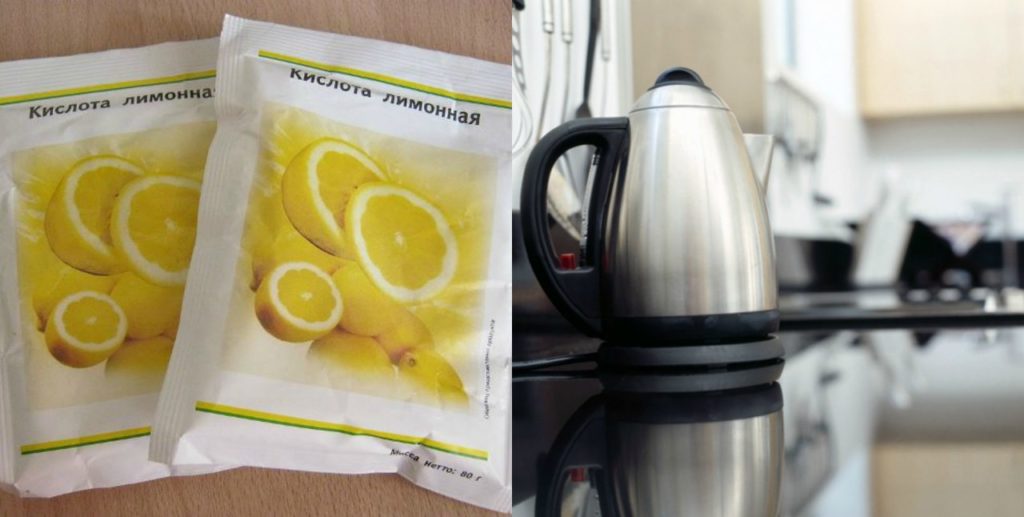
Lime citric acid
Citric acid is the most effective but aggressive method to descale in a kettle. With its help, you can quickly remove even the most old formations. In order to start cleaning, you need to take citric acid, its amount depends entirely on the degree of scale. You need to take two bags of citric acid and pour them inside. Then pour as much water as needed to cover all the contaminants. The kettle should be boiled several times with a break of a couple of minutes. All deposits dissolve in water. After cleaning, you need to rinse the kettle with detergent and pour water into it so that it is full, and put it in a boil.This cleaning agent is equally effective for both electric and kettles that heat water with gas.
Important! After such cleaning, the kettle should be washed well and boiled several times so that acid particles do not remain in it.
Vinegar Cleaning
Table vinegar is also an effective remedy. Many write that you can use both apple and regular table. In fact, the first option is a delicate method that may not always be effective, especially when it comes to a strong raid. It is best to use table vinegar. To remove scale in a teapot from stainless steel, you should take 9% vinegar and dilute it with water in a ratio of 1/9. The resulting liquid must be poured into a container and brought to a boil. After shutdown, it is necessary to check the cleanliness of the walls, if all deposits are removed, you can complete the procedure, if not, then you need to boil water several more times. After this, the liquid should be drained and washed inside all the walls.

Vinegar - clean efficiently
Brine - quickly and efficiently
You can clean the kettle with a regular brine. This solution is effective because it contains vinegar. In order to clean the brine wall, you need to pour it inside and put to boil. The procedure should be repeated several times if the degree of contamination is high.
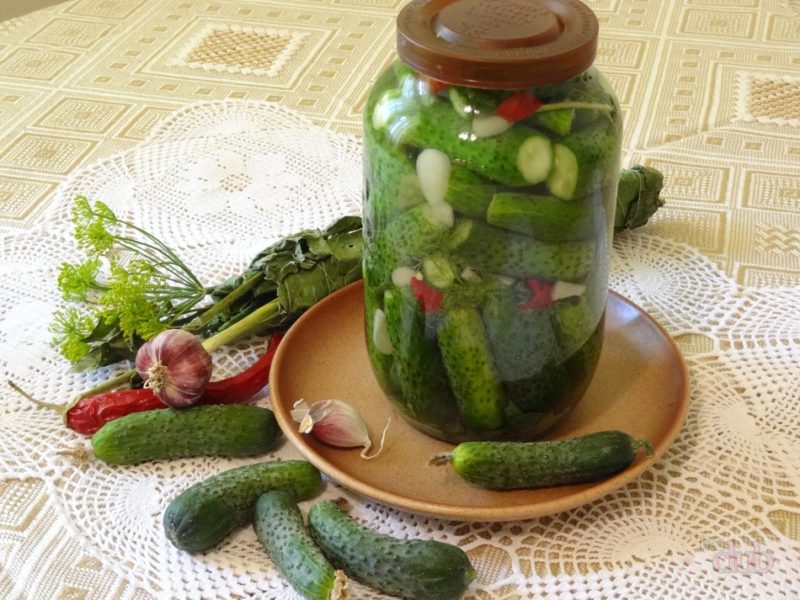
Descaling brine
Sprite, Fanta and Cola
These carbonated drinks can also be used to clean the inside of the kettle. However, this cleaning agent cannot be called the cheapest, since it will take several liters of drink.
If minor deposits are present, boiling is not required. It is necessary to pour in the right amount of liters and wait for the onset of the reaction. If nothing happens, it is best to plug it into a power outlet or put it on fire, depending on the model.

We remove deposits quickly!
For stainless dummies, it is better to use a "phantom" or "sprite"!
Soda and water
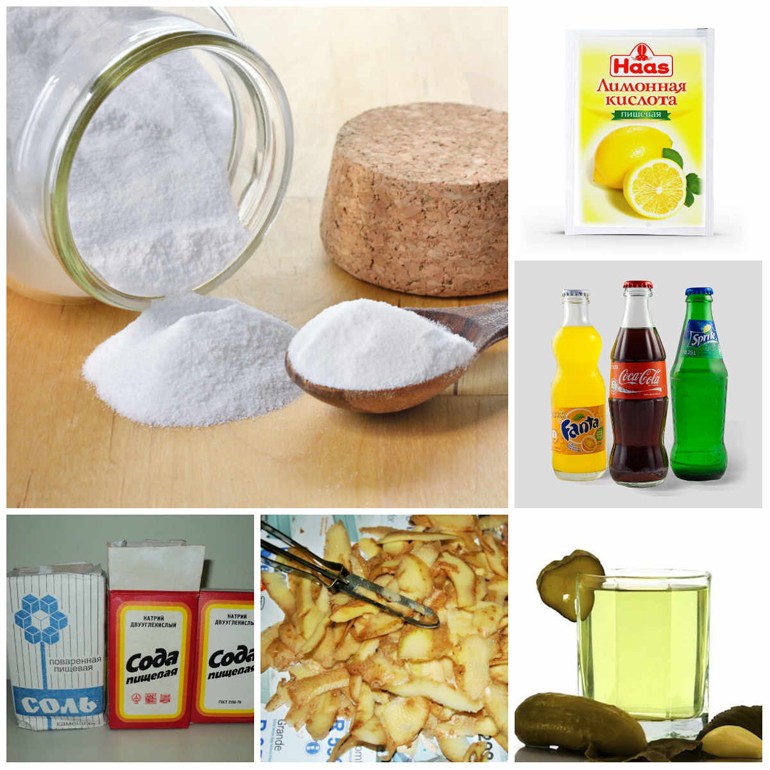
Soda and water
Soda is a universal remedy that is used not only for cooking, but also for cleaning various surfaces and utensils. It is effective not only in cleaning stainless models, but also made of aluminum and plastic. To use this product, you need to take one tablespoon of soda and dissolve it in water, the right amount. Then the resulting solution needs to be poured into a kettle and boiled until it becomes clean. As a rule, it is enough several times.
However, it is worth noting that this tool does not cope with a large number of deposits so effectively. It is only suitable if the cooking utensils undergo a cleaning process from time to time.
Prevention of plaque formation
As a prophylactic against plaque, you can use ordinary lemon. Keeping the kettle clean will help the process of boiling with tea false lemon, which will be carried out at least once a month.

